Grüße aus...Ireland! Part III: The Blasket Islands
About half-way through my day bicycling through Dingle I got off the bike and took a ferry off the Irish mainland to the Great Blasket Island.
I didn't know much about this island before visiting it. After exploring it I took the ferry back to the mainland where I visited the Great Blasket Centre, a heritage center all about life on these islands. I left knowing so much more and with a huge appreciation and respect for the people who use to live on these islands.
The Blasket Islands are a small group of six islands just off the Dingle Peninsula. The Great Blasket Island is the largest and is surrounded by the small islands of Tuaisceart, Tearacht, Inis na Bro, Inishvickillaune, and Beiginis. A village was established on one end of the Great Blasket, and a few people lived on the smaller islands on and off over the years.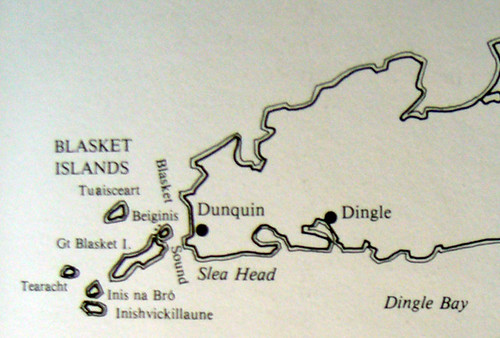
No one is sure how long ago the first settlers came to the island. There may have been Celtic and early Christian inhabitors. The first mention of a settlement there in recorded history is in 1736, though legend says there was a castle there in the middle ages.
During the Great Potato Famine in the 1840s and 1850s, the people of the Great Blasket survived relatively well. They actually had other resources to fall back on after the failure of the potato crops and the luck of a few different shipwrecks not far from the island provided them with more food and supplies.
Life on the Great Blasket was not easy. At its height, the island only had a population of 176. They had no church, no graveyard, and no doctor, so each Sunday they would row to the mainland to go to church services and would need to row to the mainland to fetch a doctor or bury their dead. That is...if there was good weather. Bad weather could keep them bound to their island for days or even weeks at a time.
After World War I (when its population reached its height), the population began to dwindle until only 23 people were left on the island by the beginning of the 1950s. At one point in this time a young man lay dying for days on the island and bad weather prevented the villigers from going to the mainland for a doctor. When the man died, weather again prevented them from being able to take the body to the mainland to be buried. This difficult experience combined with their dwindling population, finally led them to the decision to leave the island. In 1953 the island was evacuated and the government helped in rehousing them on the mainland. So now the homes they left behind are in ruins.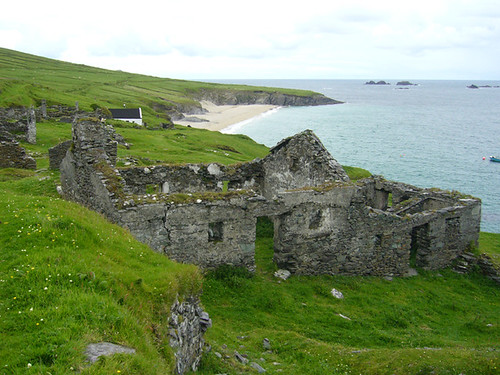
Ireland is working on making the island into a National Park or a World Heritage Site or at least setting up some conservation and minimun development guidelines...but apparently there are a lot of legalities to work out before that can happen. But the island is open for visitors like me to explore amongst the sheep, rabbits and other animals left grazing the island (their owners live on the mainland) and the only other overnight guests are a few campers.
The Great Blasket Island was incredible. I only spent about an hour walking around the ruins of the village, but I wished I had had all day to explore it.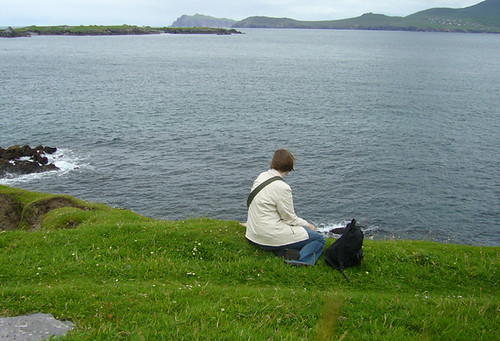
"On a green grassy bank I rested
There a panorama for the eyes
I sat by beauty's spells invested
Spells of birdsong and sea-washed isles."
-Micheal O'Guiheen, A beautiful morning
During my visit in Dublin, I learned that in the 19th century, the Irish began to see the western regions of their island as the "real" Ireland. The Wild Irish West was romanticized. But while the landscape was incredibly beautiful, and while life here must have been simple it certainly would not have been easy. The homes on the Great Blasket are all clustered relatively close together on the eastern end of the island where there is the most protection from ocean winds and where the view of the mainland would have been at least a psychological comfort. There is really no level ground, the island is a large hump rising out of the ocean and you're constantly walking on a slope. And I realized shortly after my arrival that the constant roaring of the ocean waves would have been just that...constant. It's hard to imagine what life on this island really must have been like...how difficult it must have been.
Although a lot of past outsiders have characterized the islanders as "squatters whoe exceeded all others in poverty, misery and lawlessness" (T.F. O'Sullivan, Romantic Hidden Kerry, 1931), those who knew the islanders more intimately saw past their roughness and described them as some of the best Ireland had to offer: "Quiet, honest, warm-hearted, hospitable folk they are, and the stranger will find friendship and kindliness - if not, when the fault's in himself" (Pieg Sayers, An Old Woman's Reflections, 1962 ).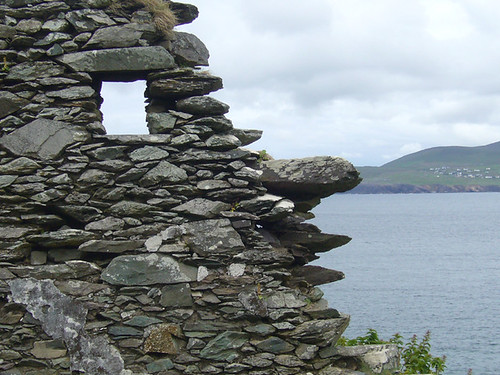
"I shall have eternal life
Though a white shroud my body cages
Only my corpse lies in the grave
But my voice shall flower throughout the ages."
-Micheal O'Guiheen, My spirit in a book shall live
Their life wasn't pure survival. I learned that some of Ireland's great literature has come from the Great Blasket. When scholars of Irish culture and language came to Dingle in the 1920s and 1930s, they discovered a rich oral history in the village on the Great Blasket. Between the years of 1929 to 1935 the three best known Blasket writers published their best known books: The Islandman by Tomas O Criomhthain, Peig by Peig Sayers and Twenty Years A-Growing by Maurice O'Sullivan. All three books tell about the personal life of the author and stories of what life on the island was like. Several other books and poems by other islanders followed...all in the Irish language. It's one of the remarkable aspects of the Blasket Islands that such an Irish literary treasure has come from this tiny island. (All the poem quotations that I've been using in this post and my last Dingle post came from the book I bought in Dingle: Poets and Poetry of the Great Blasket.)
I spent my final day in Dingle quiet and restful from the marathon of the day before. I slept in, returned my rented bike, read more James Joyce, wandered around Dingle shopping at the tourist shops and ate gourmet ice cream at Murphey's Ice Cream shop (this was a yummy flavor: Strawberry with Sage!). The next morning I took the bus back to Tralee and the train back to Dublin to catch my flight home that evening.I loved my time in Ireland. I found Ireland to be like comfort food: nothing flashy...only the cozy comfort of wool, pubs, books, good music and green hills. As the plane landed, I was surprised to find that the Black Forest outside my window just wasn't quite as beautiful as it looked before I went to Ireland. I think the beauty of Dingle and Blasket has spoiled me for life.
Look at all my Blasket photos here.
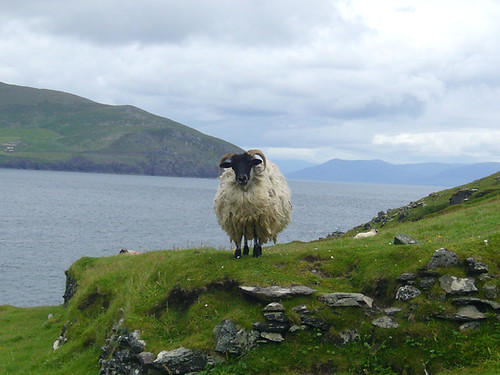

4 comments:
I wonder if the movie The Secret of Roan Inish is about the Blasket islands. That is probably my favorite kids movie. My kids like it, but I love it.
Never heard of it...I'll have to look for it!
You forgot the best Irish poetry!
Sure a brave RUC man came up into our street
Six hundred British soldiers were gathered round his feet
Come out, ye cowardly Fenians, said he, come out and fight.
But he cried, I'm only joking, when he heard me Armalite.
Sure it's down in Kilwilkie, that's where I long to be,
Lying in the dark with a Provo company!
A comrade on me left and another on me right!
And a clip of ammunition for me little Armalite.
Hi,I have just come across your blog.great stuff indeed .I have just watched a documentary about the blaskets that you might like to try and get your hands on .It's a RTE Production called "Portrait of the blaskets"made in 1984 .very interesting stuff.
regards Mark from Wicklow, Ireland
Post a Comment